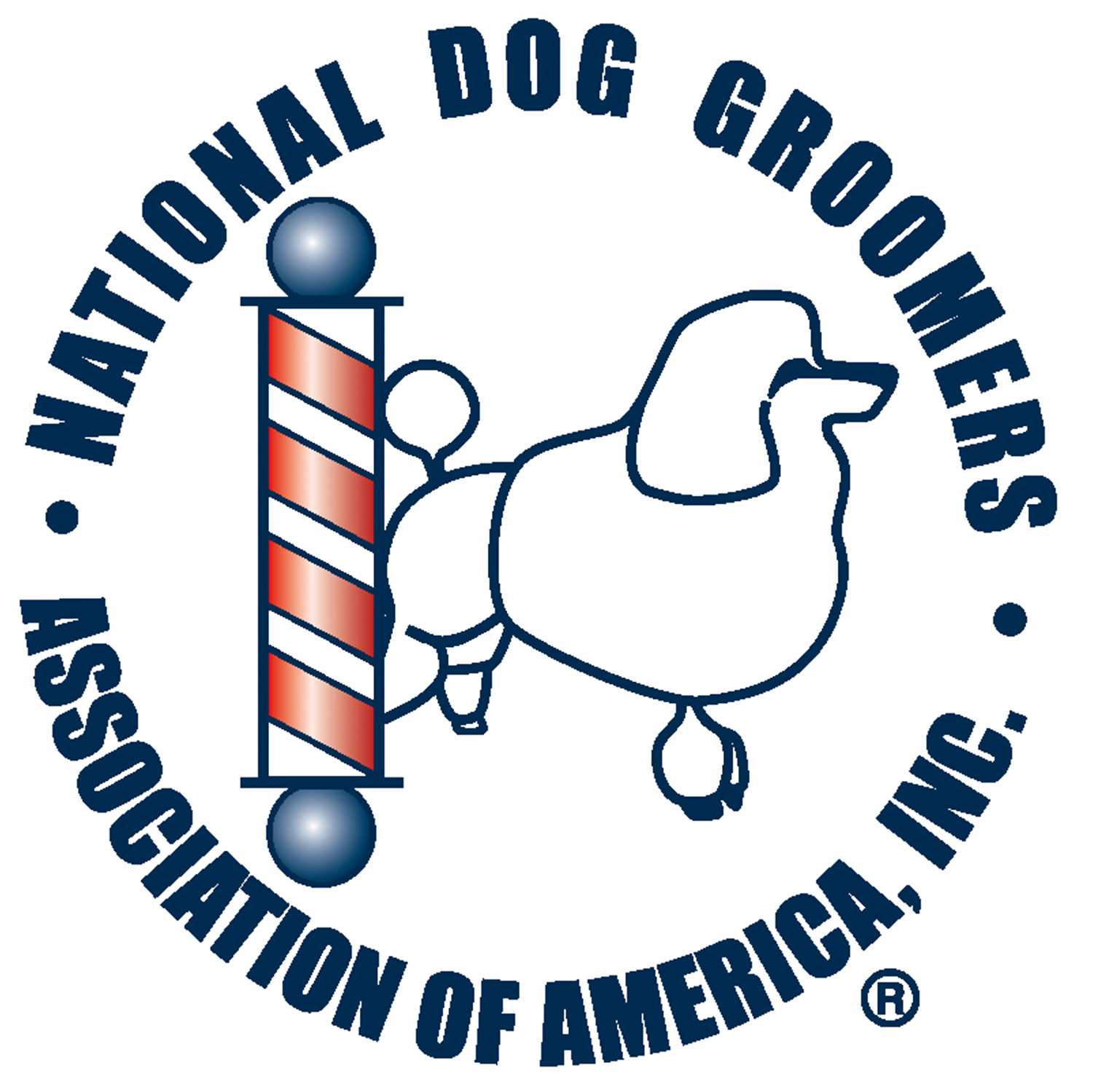NCMG Certification Testing Information
Earning the prestigious title of “National Certified Master Groomer”®
Certification is the standardized method to obtain professional recognition for those pet groomers whose knowledge, techniques and abilities have been tested and thereby Certified as having met the high standards set forth by the National Dog Groomers Association of America certification program and endorsed by the American Kennel Club.
Individuals wishing to earn their NCMG must complete rigorous testing in both written and practical exams featuring breed specific knowledge and coat patterns.
Certified Status can provide:
• A valuable aid in evaluating potential employees.
• May provide upward mobility in your pricing structure.
• Instant credibility and recognition as a professional in the field.
• Certified credentials provide increased job responsibilities and opportunities.
• You will acquire a higher level of career development, confidence and self-esteem.
• Documentation of your individual skills that may serve as an assessment to potential employers.
You will be required to demonstrate your grooming skills before NDGAA certifiers on the following breeds. It is important you purchase the complete 14 breed profiles for complete grooming information & acceptable patterns. Acceptable breeds and time allotments are listed below for your information. All undocked, unaltered, uncropped and even dogs with minimal applied color are acceptable for testing.
Non-Sporting
Bichon Frise will be allotted 1 hour and 45 minutes.
Poodle times vary by size:
11” and under: 1 hour and 30 minutes
11”-17”: 1 hour and 45 minutes
17”-23”: 2 hours
Over 23”: 2 hours and 15 minutes
For the practical skills exam of the Non-Sporting breed, applicants are required to bring their own Poodle or Bichon Frise with at least 8 weeks growth of hair or enough coat to do proper scissoring and/or pattern work. The dog should be bathed, fluff dried and completely dematted. No crate drying please! Ears should be cleaned and toenails should be trimmed to a proper length prior to testing.
Sporting
The sporting breeds will be allotted 1 hour and 30 minutes
For the practical skills exam of the Sporting breed, applicants are required to bring their own American or English Cocker Spaniel or Springer Spaniel with at least 8 weeks coat growth. The dog should be bathed, fluff dried, have ears cleaned and toenails trimmed prior to testing. All clipper and scissor work must be done as part of the testing procedure.
Long-Legged Terriers
Miniature Schnauzer and Wire Fox Terrier will be allotted 1 hours and 30 minutes.
Bedlington Terrier, Soft-Coated Wheaten Terrier & Kerry Blue Terrier will be allotted 2 hours.
Optional: Add 30 minutes if hand-stripping
For the practical skills exam of the Long-Legged Terriers, applicants are required to bring their own Miniature Schnauzer, Wire Fox Terrier, Bedlington Terrier, Soft Coated Wheaten Terrier or Kerry Blue Terrier with at least 8 weeks coat growth. The dog should be bathed, fluff dried, have ears cleaned and toenails trimmed prior to testing. All clipper and scissor work must be done as part of the testing procedure.
Short-Legged Terriers
The hand-stripped Cairn Terrier will be allotted 2 hours.
All remaining short-legged terriers will be allotted 1 hour and 30 minutes.
Optional: Add 30 minutes if hand-stripping - excluding the Cairn Terrier.
For the practical skills exam of the Short-Legged Terriers, applicants are required to bring their own Scottish Terrier, West Highland White Terrier, Sealyham Terrier or Cairn Terrier (Cairn must be hand-stripped) with at least 8 weeks coat growth. The dog should be bathed, fluff dried, have ears cleaned and toenails trimmed prior to testing. All clipper and scissor work must be done as part of the testing procedure.
Written Exams
A written examination covering the Non-Sporting, Sporting and Terrier breeds currently recognized by the American Kennel Club will be administered as part of each breed test. Registrants should be familiar with the history and visual recognition of all breeds as well as the respective grooming required. You MUST take a written exam for each breed group to be awarded your certification in each breed group. Other study materials include the AKC Complete Dog Book (20th edition), AKC Breed ID poster, Notes from the Grooming Table (Verplank), and the NDGA Breed Profiles and study aids.
Attending an NDGAA Workshop
NDGAA’s workshops were developed to offer all groomers the opportunity to enhance their grooming skills, to stay current with industry trends and to exchange ideas, methods and opinions with colleagues. All groomers are strongly encouraged to participate in our continuing educational workshops. It is mandatory that all groomers attend at least one workshop before finishing their NCMG.
You will be involved in an extensive forum of continuing education & knowledge, networking, enhancement of your grooming and scissoring skills, increased career success and of course camaraderie with fellow pet professionals. The workshop will consist of:
Orientation - An extensive explanation of the certification testing procedure and discussion of NDGAA membership programs and benefits offered, followed by a question & answer session.
Breed Demo’s - Demonstrations will consist of showing the proper breed profiles on certifiable breeds available to us at the site. Points that will be discussed include; breed conformation with emphasis on balance, symmetry and smoothness of finish.
Stripping, Thinning & Carding - Whether you are new to these techniques or want to perfect your skills, our certifiers will show you the correct method of grooming a hard coat and what to do with a blown coat. We will go over the correct usage of stripping knives, thinning shears, stripping blocks and carding with blades.
Patterns - Certifiers will share with you the correct line placements on terrier and sporting breeds, as well as correct feet, ears and heads. We will also touch on how to evaluate the poodle for proper pattern placement and how to achieve the proper poodle topknot

